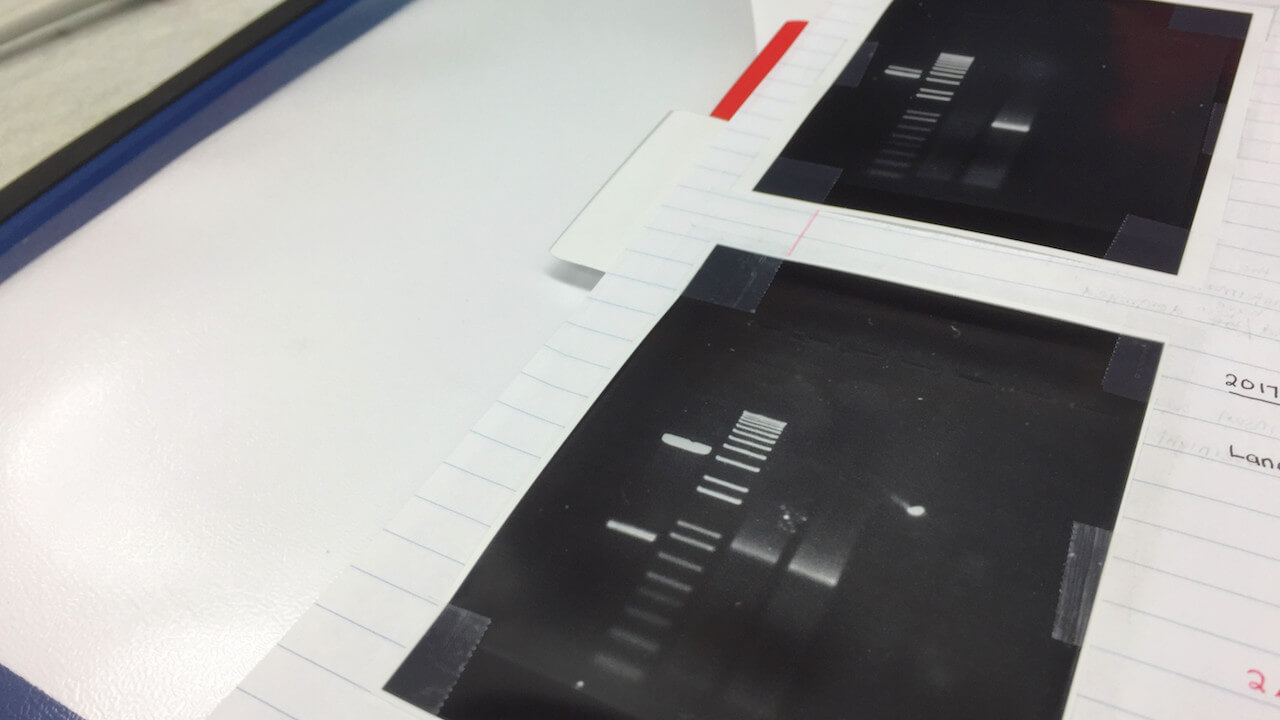
This list might grow from time to time. Given resources and time, I experimented some ways to optimize reactions involving DNA when there is agarose gel involved during my first PhD lab rotation.
Vortex and spin down. Do not ever vortex or spin down tube when there is/are enzyme(s) in that tube. For example, a digestion assay with REase. The performance of enzyme would suffer dramatically. A simple flick and tap would work to mix a reaction mix. Pipetting up and down would work too. Enzymes are your friend.
EtBr. I use EtBr for staining DNA after running it on a gel. It is cheap and it works. EtBr is not as dangerous as many would think and the scaremongering seems to be hysterical at best. Stain for 5-7 minutes with 5 µl of EtBr, then destain for 20-30 minutes. Be very mindful of your detection sensitivity. If the amount of DNA you have in any given well is above 10 ng/µl, that should give you a pretty nice band. However, if you need to purify specific DNA bands after running a gel, EtBr might not be the best choice. Consider Midori Green or other alternatives.
REases. Double digest is a pretty tricky water to navigate in. Most of REases I use come from New England Biolabs (NEB). They have a portal for checking buffer compatibility, the NEBcloner. For example, XhoI and NheI are compatible in CutSmart buffer (100% activity). But what about BstXI and StuI? This is how I do it. First, figure out which REase requires high salt and which one requires low salt. In this case, BstXI requires high salt (NEBuffer 3.1) whereas StuI requires medium salt (NEBuffer 2.1). Then, check for activity. BstXI has 50% activity in medium salt. That is actually not bad. Hence, medium salt buffer should work for both BstXI and StuI. Incubate the reaction for a little bit longer would help. Different sect would advise differently (like, use different REase combo), so ask around.
Starting concentration. The source of all miseries. When purifying DNA from gel (a.k.a gel-cut purification) via spin column kit, the yield would be 25-40% from the starting concentration. Purifying DNA straight from a reaction without running it on a gel (a.k.a spin purification) would give a slightly bit higher yield of 50-60%. Yield is a real concern when you have subsequent reactions to run, e.g. REase reaction. I like my REase reaction around 2.0 - 4.0 µg because, as you may have guessed it, you need to do a gel-cut purification after the REase reaction. A standard Phusion PCR (50 µl reaction volume) yields 30-50 ng/µl after spin purification, so sometimes I ran 3 reactions to get to 150-200 ng/µl. Point is, plan your experiment carefully and be mindful of the final concentration you need.
Ligation reaction. Depending on the size of vector and insert, you will need a different ratio. In my case (3.1 kb vector, 0.8 kb insert), the ratio I used was 1:3 of vector:insert. But then, be cautious. This has to be molar ratio, not amount ratio. The molar ratio of the aforementioned vector and insert size is about 1:4 (1 vector = 4 inserts). To make this clear, assume you have 5 ng of vector and 5 ng of insert. Actually, in this case, 5 ng of insert has 4 times more of the insert molecules than the vector. So factor that molar ratio when calculating the vector:insert ligation ratio.
Agarose gel. Make sure you use the correct concentration. You can find online charts on the resolution limit to separate bands cleanly on an agarose gel. Also, remember this handy tips. Pull the comb when the gel is completely submerged in the running buffer. I bumped into weird and funny looking bands when I pulled the comb before submerging the gel in buffer.
Eluting DNA. Most DNA purification kits (miniprep, spin-column, etc.) provide elution buffer. Most elution buffers have salt in it. Some downstream assays (PCR, REase, etc.) could be salt-sensitive. So it is better to elute DNA from column with just nanopure water.
If you have handy tips for manipulating DNA, tweet to me! Find me “Aizan Fahri” or @aixnr on Twitter.